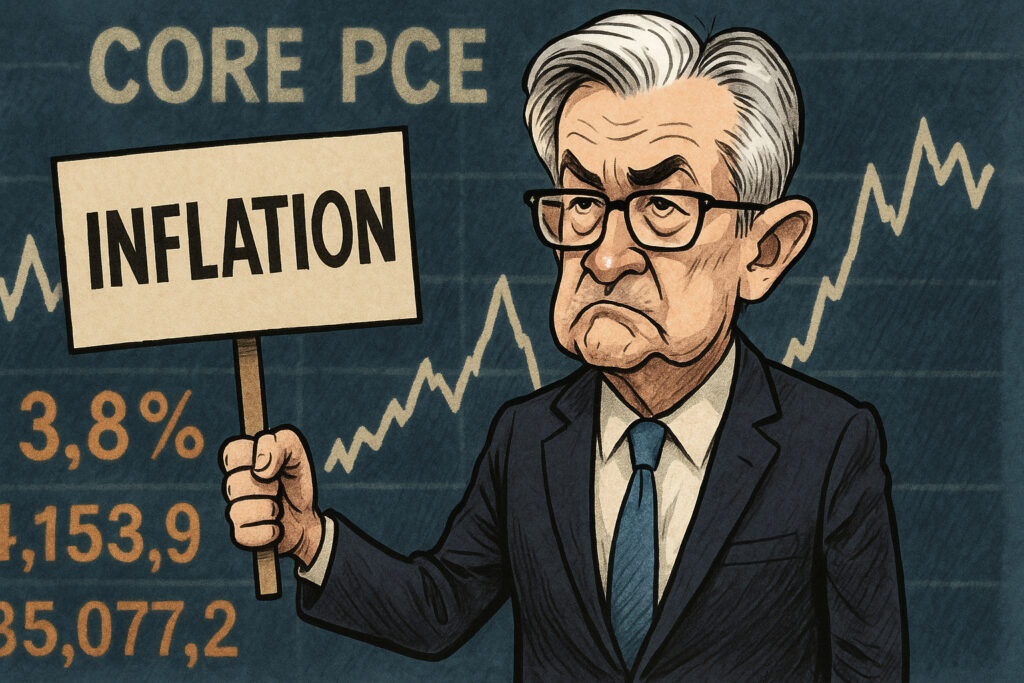Persistent Inflation Confirms Market Fears
On March 30, 2025, the latest U.S. Core Personal Consumption Expenditures (PCE) Price Index revealed a stickier-than-expected inflation environment, sending ripples across financial markets. The Core PCE, the Federal Reserve’s preferred inflation gauge, rose 0.4% month-over-month and 2.9% year-over-year, defying expectations of a slight cooling. This marks the third consecutive month of elevated readings, suggesting inflation is more entrenched than policymakers would prefer.
The report, released by the Bureau of Economic Analysis (BEA), follows February’s already concerning 0.3% MoM increase and confirms a trend that significantly complicates the Fed’s roadmap for monetary easing.
💡 What Is Core PCE and Why It Matters
Core PCE strips out volatile food and energy prices, providing a clearer view of underlying inflationary pressures. It is closely monitored by the Federal Reserve because of its reliability in reflecting long-term price trends and its alignment with consumer behavior.
The Fed’s inflation target is 2%. Persistent readings above this level, particularly with rising services costs and wages, suggest that the U.S. economy may not be ready for imminent rate cuts—even as markets had priced in as many as three cuts by December 2025.
Market Reactions: Equities and Yields Diverge
The immediate market response to the PCE data was mixed:
- S&P 500 fell by 0.7%, closing at 5,060.13, with interest-rate-sensitive sectors such as tech and real estate leading the decline.
- The Nasdaq Composite slid 1.1%, weighed down by large-cap growth stocks.
- 10-year Treasury yields jumped to 4.42%, their highest since early February, as traders re-priced the Fed path.
- The U.S. Dollar Index (DXY) rallied above 104.50, bolstered by the prospect of “higher for longer” rates.
Fed’s Dilemma: Inflation vs Growth
This PCE print places the Federal Reserve in a difficult position. On one hand, economic growth remains moderate, with unemployment stable at 3.8% and GDP growing at a 2.2% annual rate. On the other hand, sticky inflation pressures could prevent the Fed from delivering the cuts markets desperately want.
Fed Funds Futures now imply only a 34% probability of a June rate cut, down from 67% a week ago. Fed Chair Jerome Powell, speaking earlier this week, reiterated that the Committee remains “data-dependent,” and that sustained progress on inflation is necessary before easing begins.
What Analysts Are Saying
- Goldman Sachs revised its forecast, now expecting only one rate cut in 2025, down from two.
- Bank of America warned that sticky core inflation could push the first cut into Q4.
- Morgan Stanley emphasized that services inflation, especially in housing and healthcare, is “structurally resilient.”
Sector-by-Sector Impact
Technology
Tech stocks are particularly sensitive to interest rate changes due to their long-dated cash flows. The Philadelphia Semiconductor Index (SOX) declined 2.3%, with Nvidia and AMD both down over 3%.
Real Estate
REITs sold off, as higher yields compress valuations. The Vanguard Real Estate ETF (VNQ) dropped 1.5% on the day.
Commodities
Gold initially rose above $2,260/oz on safe-haven demand but reversed as the dollar surged, settling at $2,230. Oil prices held steady, with WTI at $82.10, buoyed by tight inventories and Middle East concerns.
Consumer Discretionary
Retailers and leisure stocks struggled. Persistent inflation erodes consumer purchasing power. Amazon lost 1.2%, while Target fell nearly 2%.
What It Means for Investors
- Expect Volatility: As the Fed’s path becomes murkier, markets will likely see increased day-to-day swings.
- Reassess Rate-Sensitive Holdings: Growth and real estate stocks may remain under pressure.
- Consider Inflation Hedges: Commodities and Treasury Inflation-Protected Securities (TIPS) could gain traction.
- Follow the Fed Commentary Closely: Markets will dissect every word from Fed officials over the coming weeks.
Outlook: Is the 2% Target Still Realistic?
Some economists argue that the Fed may need to reconsider its 2% target if inflation proves too stubborn. Others believe the central bank should remain resolute, warning that premature cuts could reignite inflationary pressures.
In either case, today’s PCE data serves as a clear signal: inflation is far from tamed, and markets must brace for a longer tightening cycle than initially hoped.
